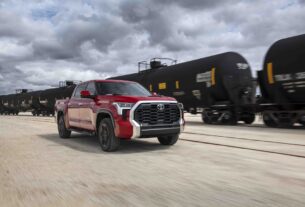Several car makers are more closely considering producing hybrid cars and trucks to meet consumers’ growing demand and avoid incurring penalties from federal fuel economy and emissions regulations.
Automakers are investing in all-electric vehicles to increase their prevalence on American roads. However, the evolving shift contradicts the industry-wide promotion of EVs encouraged by the Biden administration.
You are watching: Hybrid cars gain traction as automakers navigate EV transition
Hybrid cars have the potential to assist the auto industry in reducing short-term fuel and emissions while easing consumers into the electrification of their vehicles. These cars mix conventional internal combustion engines (ICE) with EV battery technology.
See more : Honda to unveil new compact gas-electric hybrid sedan
Last year, Toyota received criticism from environmental groups for producing a mix of hybrids, Plug-in hybrid electric vehicles (PHEVs), and EVs. However, Toyota argued that producing HEVs can save up to eight times the carbon emitted into the atmosphere than EVs.
Furthermore, a recent Edmunds report revealed that conventional hybrid electric vehicle (HEV) sales like the Toyota Prius will surpass all-electric vehicle sales in 2023. However, until November of this year, 1.2 million cars (8.3% of all cars sold in the United States) were HEV. Compared to overall sales of 2022, that share has increased by 2.8 percentage points. Meanwhile, EV sales accounted for 6.9% of total sales in December, or about 976,560 units, a 1.7% increase over the same period last year.
In addition to being less expensive, hybrids help alleviate several EV-related concerns, such as range anxiety and a lack of infrastructure for charging. This year’s average hybrid, according to Edmunds, cost $42,381. This is less than the average EV price of $59,400, PHEV price of $60,700, and average car price of $44,800.
See more : More people are trading in their electric and hybrid cars for SUVs, report claims
However, large automakers, notably the Detroit automakers, relied on EVs to help balance the emissions and poor fuel efficiency of larger SUVs and trucks, which might result in fines from the federal government amounting to hundreds of millions of dollars.
The Detroit-Three:
From January to November of this year, Ford sold over 121,000 hybrid vehicles, representing a 23% increase compared to the same period in 2022. This means hybrid sales account for 6.8% of the company’s total sales. Meanwhile, Ford’s electric vehicle sales rose by 16.2%, reaching around 62,500 units, 3.5% of its overall sales.
Before launching a variety of EVs beginning next year, Stellantis will rely primarily on PHEVs for its electrification strategy. Leading the way in the U.S. regarding PHEV sales, the company’s third-quarter sales were made up primarily of SUVs, namely Jeep Wrangler and Grand Cherokee models.
However, General Motors isn’t ready to change its EV goals of providing all-electric cars by 2035. With the Chevrolet Volt, GM set the standard for plug-in electric cars in the 2010s. Early in 2019, the car’s manufacturer discontinued it, citing issues with demand and cost.
Source: https://us.congthucvatly.com
Category: Electric & Hybird


